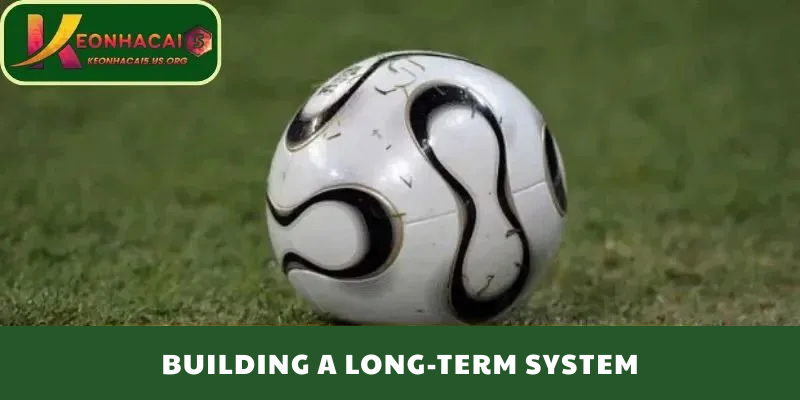A disciplined approach beats lucky streaks. This comprehensive guide turns “Thủ Thuật Cá Cược” into a method—grounded in numbers, clear routines, and responsible boundaries. Whether you follow domestic leagues or international tournaments, the goal is the same: understand probability, interpret market signals such as kèo nhà cái, and make consistent, informed decisions without emotion.

Understanding the Core: Probability Before Prediction
Translate Odds Into Implied Probability
Every price reflects an implied probability. Converting odds into percentages helps you judge whether a line overvalues or undervalues an outcome. When you see kèo nhà cái, ask: “What chance is this price implying—and is it realistic given my data?” Building the habit of working in probabilities keeps your thinking objective.
Expected Value (EV) as the North Star
EV = (win probability × payout) − (loss probability × stake).
You do not control outcomes; you control the quality of decisions. Positive-EV decisions can still lose in the short run, but they win across large samples. That mindset prevents overreacting to variance.
Bankroll and Risk: The Non-Negotiables
Set a Ring-Fenced Bankroll
Create a dedicated bankroll separate from daily finances. Assign a fixed unit size (for example, 0.5–1.5% of bankroll per position). Grow the stake only when the bankroll grows; reduce it when the bankroll declines. This is the backbone of sustainable Thủ Thuật Cá Cược.
Position Sizing With Guardrails
Avoid doubling down after losses. Cap daily exposure (e.g., 3–5 units) and event exposure (e.g., 1–2 units per match). A ceiling keeps single swings from dictating long-term results.
Document Everything
Maintain a ledger with date, market, selection, closing price, stake, and rationale. Review every 25–50 decisions to find patterns: leagues you read well, markets you misinterpret, times you overbet.
Research That Matters: From Team Sheets to Tendencies
Start With Reliable Baselines
Use rolling windows (5–10 matches) to gauge attack/defense quality. Look beyond raw scorelines to chance quality, set-piece threat, and transitions. Catalog repeatable strengths (pressing, width, dead-ball routines) and weaknesses (defending cutbacks, aerial duels).
Availability and Scheduling
A missing ball-progressing full-back may reduce chance creation more than a rotated winger. Factor in travel load and fixture congestion; intensity drops are common in the third match inside seven days.
Tactical Matchups
Football swings on matchups: full-back vs. winger, target striker vs. center-backs, 6 vs. 10 in the half-spaces. Note when styles collide (possession vs. transitions), because those duels shape attempts, corners, and game state.
Reading the Market: What “kèo nhà cái” Is—and Isn’t
Price as a Snapshot of Collective Belief
A line is not a prophecy; it’s consensus under uncertainty. Treat kèo nhà cái like an X-ray of expectations. If your thesis differs, list the exact reasons: lineup change, tactical mismatch, weather, rest. If you cannot name reasons, pass.
Movement as Information
Meaningful moves often precede official news. When a price shifts against you, reassess rather than react emotionally. Ask, “What new information did I miss?” A small edge with discipline beats a big opinion without it.
A Repeatable Workflow for Decisions
H2H Research Checklist
- Form windows: five-match and ten-match performance, not just results.
- Shot quality: chances allowed in prime zones, big-chance differential.
- Set-piece delta: goals and xG from corners/free kicks for and against.
- Game-state profile: performance when leading or trailing.
Build a One-Paragraph Thesis
Describe expected tempo, territory, key matchups, and potential swing factors (e.g., early yellow for a full-back vs. elite winger). Your thesis must be falsifiable so you can learn post-match.
Align Markets to Scenarios
Map mainline (handicap/1X2), totals, and select props to your thesis. If the market implies a cagey match but your evidence points to high transition volume, you have a possible angle—if your data is strong.
In-Play Discipline: When the Picture Changes
Validation Signals
- Your expected side controls the zones you predicted.
- Pressing triggers arrive on time; the opponent struggles to progress.
- Set-piece patterns produce shots or dangerous second balls.
Invalidation Signals
- The opponent changes shape (e.g., back three mirrors your width).
- Forced substitutions break supply chains.
- Weather or pitch issues suppress tempo.
When evidence contradicts your pre-match read, stay flexible. The best Thủ Thuật Cá Cược is the humility to adjust.
Psychological Traps to Avoid
Recency and Narrative Bias
A big win can mask flaws; a narrow loss can hide good process. Re-anchor on data after every matchday.
Sunk-Cost and Tilt
Losses do not require “answers.” They require review. Impose a cool-off rule: if you breach daily exposure limits, step away. Protecting mindset protects EV.
Overconfidence in Small Samples
Hot streaks are often variance. Expand the sample size before increasing unit size. Keep your edge modest, your records meticulous, and your evaluations honest.
Building a Long-Term System

Specialize, Then Expand
Start with two or three leagues you watch regularly. Master their rhythms, refereeing tendencies, and seasonal quirks before adding more.
Version Your Process
Label iterations of your model or checklist (v1.1, v1.2…). When results improve or worsen, tie changes to those versions so you know what worked.
Read more [1094+] No Dp, Images, Photos, Pictures & Wallpapers (2025)
Responsible Play as Strategy
Set time limits, deposit limits, and stop-loss rules. Schedule off-days. Sustainable practice demands boundaries—your clarity tomorrow depends on your restraint today.
A Sample Weekly Routine
- Monday–Tuesday: Refresh rolling metrics and injury lists.
- Wednesday: Shortlist fixtures; write initial theses.
- Thursday: Compare theses to kèo nhà cái; flag genuine value.
- Friday: Confirm lineups/travel/weather; finalize positions with unit sizes.
- Weekend: Track live signals; note confirmations and contradictions.
- Monday (post-week): Audit decisions; archive lessons.
Conclusion: Process First, Outcome Second
You cannot control the bounce of the ball, but you can control your preparation. Treat Thủ Thuật Cá Cược as a professional routine: quantify probability, size positions modestly, read kèo nhà cái as information—not instruction—and keep immaculate records. Do this consistently and you will make calmer, clearer decisions over time.
A gentle next step: pick one upcoming fixture, draft a five-line thesis, translate odds into implied probability, and set a pre-defined stake. After the match, review the thesis line by line. Repeat weekly, improve methodically.
Read more related blogs on Photosking. Also join us whatsapp.